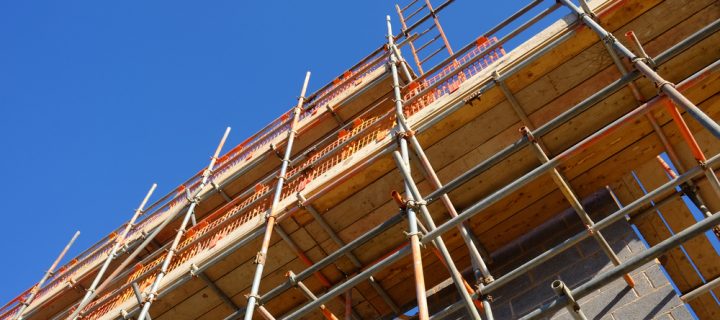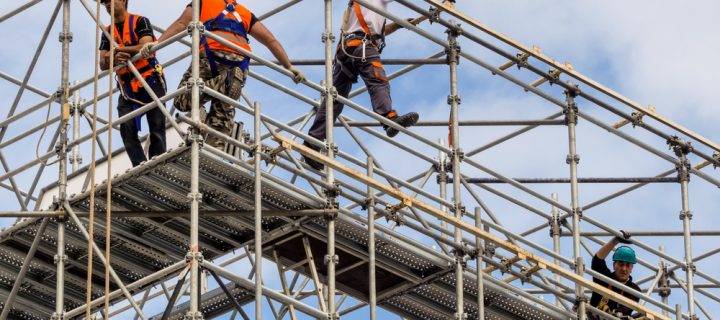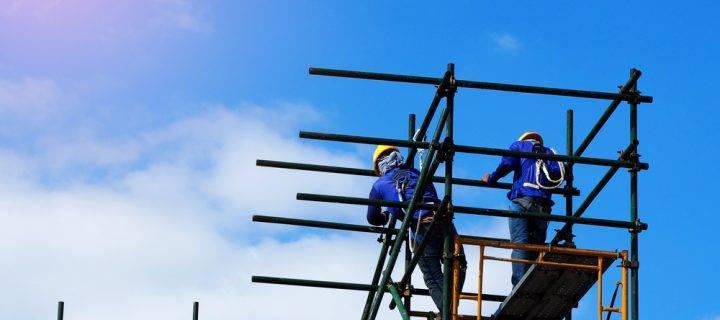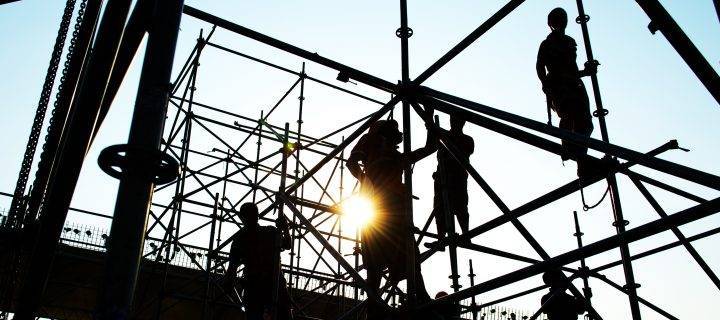Whether you are buying scaffolding insurance for the first time or looking to renew it, there is a number of factors to consider. Here at Network Scaffold Services, we put our staff and business at the forefront of our minds ensuring our scaffold, safety decking and plastic hoarding is as safe as possible. In this post, we will tell you all you need to know about scaffolding insurance and why it is so important. What is Scaffolding Insurance? Scaffolding is a high-risk business, where all the risks need to be taken into consideration on a day-to-day basis. Consider risks for your team, contractors and members of the public, as anything can happen to anyone at any time. Without insurance, any accident that occurs on your site means your business could be financially liable if an accident was caused by you. The insurance is therefore designed to protect you financially, against unforeseen accidents. Why Do You Need It? Insurance will mitigate risk, even the unavoidable and unknown risks of the scaffold industry. Because of the nature of the work, scaffolders are put at greater risk than many other trades. From erecting the scaffolding to working on it, maintaining it and dismantling it, think about the different types of accidents that could happen to you, your colleagues, contractors, members of the public plus the site if an accident happens. What Types of Insurance are Available? Scaffold insurance is made up of a number of different insurance types because each covers a different risk – Public Liability Insurance – This is the main type of insurance which is designed to protect your business if a third party makes a claim against your company for causing an accident or injury to themselves or damage to their property. If you are found to be legally responsible for the injury or damage claim, public liability insurance will assist with paying the financial cost. Employer’s Liability Insurance – If your scaffolding business directly employs people, whether full time, part-time or contractors, there is a legal requirement for you to have employer’s liability insurance. This is designed to protect an employee should something happen to them when operating and working on the scaffolding. If you are found...
Read Moreabout Scaffolding Insurance ExplainedStrong winds and scaffolding are not exactly words you will want to hear in the same sentence! Having said this, professional and qualified scaffolders such as Network Scaffold are fully aware that conditions can change at any time. This is all part and parcel of the job and there are certain things to be aware of. Can Scaffolders Work in Windy Conditions? During a storm or particularly strong winds, working at height and on a scaffolding structure is dangerous and is not recommended. It does not matter how qualified scaffolders are. Is Scaffolding Affected By Weather? No, scaffolding is not affected by the weather. While even the most qualified scaffolders will not work on structures, the scaffold itself should not be affected. During windy or stormy conditions the structure should remain intact and not blown over. If your scaffold structure has been blown over or moved due to strong weather conditions, this means it was not constructed correctly or by qualified professionals. Construction scaffold needs to be inspected before it is used for the first time and every 7 days until it is removed. You should also arrange inspections of the structure every time it is exposed to adverse weather conditions or has been substantial altered in any way. Working with Network Scaffold means you are working with a qualified scaffolding provider as we are currently accredited as a SMAS Worksafe Contractor and Safety Schemes in Procurement plus we also a member of the Scaffolding Association. Working with Scaffolding Specialists Network Scaffold is based in Derby, and we currently work with clients across Derbyshire, Staffordshire and the surrounding areas such as Tamworth and Burton on Trent. Our services extend beyond regular scaffolding, we also offer access scaffolding plus edge protection and alloy towers. If you require a quote for a domestic or commercial project, please do not hesitate to contact us...
Read Moreabout Can Scaffolding Survive Strong Winds and Storms?The UK government has recently announced a £3 billion plan to upgrade a number of buildings across the country, with scaffolding set to play a big part. Homes, schools and hospitals will be part of this widescale upgrade, with the hope of creating 120,000 construction jobs. Network Scaffold is the leading provider of scaffolding across Derby and Nottingham, plus we can also offer access scaffolding, edge protection and alloy towers. Here we are going to look at this announcement and how scaffolding can be effectively utilised on commercial and domestic property upgrades. Explaining Construction Government Support Homeowners have been offered the chance to save on home upgrades as part of the government’s £2 billion Green Homes Grant. Additionally, £1 billion has been announced to improve the energy efficiency of publicly owned buildings. With grants offered to cover green home improvements ranging from the insulation of walls, floors and roofs plus the installation of double or triple glazing. The beauty of all of these sort projects is that they will all require scaffold services. Business and Energy Secretary Alok Sharma said of the announcement, “Our plan to upgrade the nation’s buildings and help build back better is good news for jobs, the environment and people’s back pockets, as we reduce emissions and help cut energy bills. “I urge everyone to visit the Green Home Grants website to see how they can make the most of this fantastic scheme.” Safe and Reliable Scaffolding Network Scaffold offers a safe and reliable range of scaffolding, especially during these challenging times of COVID-19. We have implemented a progressive environmental policy with a strong commitment to supporting our environment and ensuring as little disruption as possible. If you would like a no-obligation quote for our scaffold services, please contact us today. Network Scaffold Services are based in Derby near the operating depot nearby to the Toyota plant at...
Read Moreabout Scaffolding Plays a Part in Government Construction DriveAs a member of the Scaffolding Association, Network Scaffold has been following the latest information released regarding new and adjusted working practices in the wake of the Coronavirus pandemic. For our latest blog, we are going to summarise the main points that all scaffolders and their clients should be aware of. 7 Ways Scaffolding Practices are Changing 1. Facemask Guidance – The HSE has issued a safety alert that states that all employers and suppliers should not purchase or use KN95 facemasks as PPE. 2. SMAS Worksafe Applications Reverted – With a lot of the industry back to work, whilst following social distancing guidelines, changes implemented to SSIP assessments have been removed. The process will now revert to normal from 30th June. 3. NHS Test and Trace – The NHS Test and Trace service has been launched nationwide. The guidance states that if you have come into close contact with someone who tests positive you will need to isolate for 14 days, even if you are showing no symptoms. 4. Safe Working Guidance – The UK government has released updated guidance for people who work in or run outdoor working environments, which has particular relevance for construction sites. 5. PPE Advice from HSE – The HSE has set up a dedicated section on their site regarding PPE for non-healthcare businesses. 6. Construction Workers Testing Eligibility – The UK government has confirmed that construction workers are eligible for coronavirus tests. This helps to safeguard site workers but please note, this is only intended for those showing symptoms of coronavirus. A coronavirus test can be booked on the Government’s website. 7. Scaffolding-specific Guidance on Social Distancing – Public Health England has issued sector-specific guidance on social distancing in the workplace. It states that construction work can continue in accordance with social distancing guidelines. There is the continued importance of frequent handwashing, good ventilation plus having a considered approach to enclosed machinery. Talk to our Scaffolding Specialists Today If you are looking for scaffolding services in Derby or Nottingham, don’t hesitate to get in touch with Network Scaffold...
Read Moreabout COVID-19 Scaffolding Advice from Scaffolding AssociationThe importance of a preliminary tie test for any scaffolding used in construction works cannot be understated. This task should be carried out away from the area where the scaffold is erected which prevents stressing on the facade where it is being positioned. A preliminary test load has different rules, based on the type of Tie which makes it crucial to know the type of Tie being used to ensure an accurate design is provided. Five tests need to be carried out in each different base material of the project which are carried out on sample anchors in the same base material. This again should take place away from areas which are being used and must not be used in the job at any time. The tests include pulling without slipping for a working load of two non-nylon tie, then take further consideration for three times using a nylon-based tie. If all of these tests pull without slipping for a working load of 2 non-nylon tie then it is okay and no further consideration needs to be taken. If the ties move or slip during this stage then the tie would fail. Non-nylon ties will need either the average failure load divided by three for the maximum permissible tie load or the worst-case failure on the weakest test which is then divided by 2. The Right Time to Test Scaffold Ties Using our decades of experience, Network Scaffold understand these tests will take place between the design phase and the start of construction. The tie load information for the tests to take place, needs to be clearly stated to the scaffolding contractor for the preliminary testing. Proof testing is sometimes confused with the overall tie test load for scaffolding but these are two different practices. This testing is only quality checking when the scaffold is in place. Proof testing needs to be carried out with a minimum of three ties or 5% of all ties; whichever is greater. Contact the Scaffolding Specialists If you have any questions about scaffolding ties, please get in touch with Network Scaffold today. We are the leading supplier of scaffolding and access scaffolding in Derbyshire and the surrounding...
Read Moreabout Your Guide to Testing Scaffolding Ties




